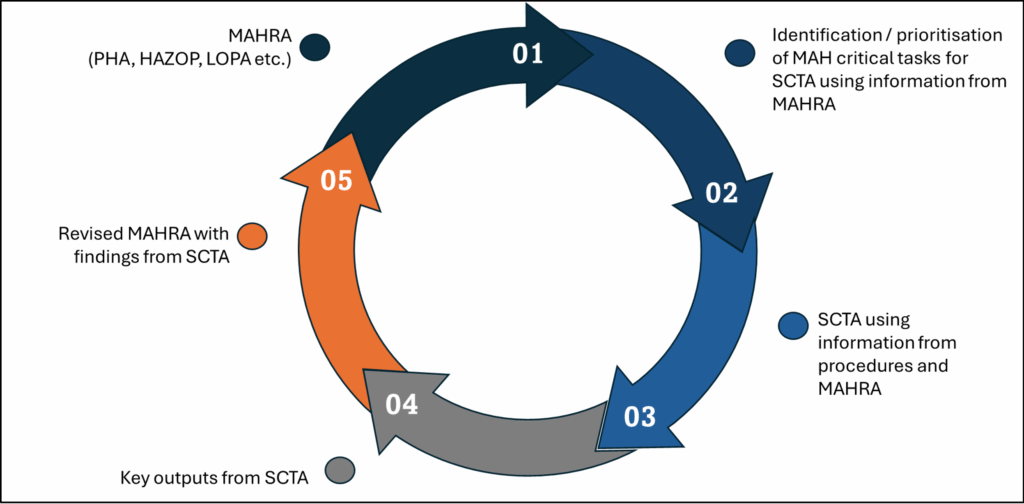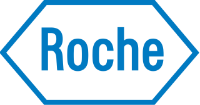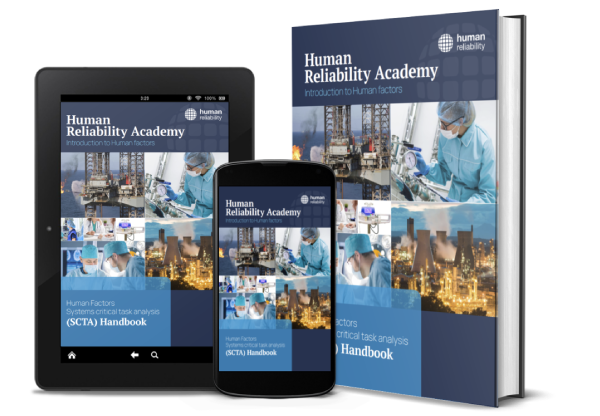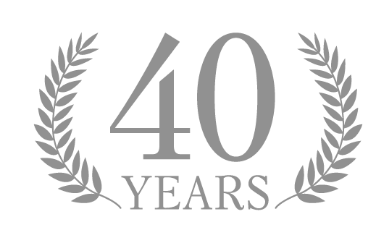For Control of Major Accidents (COMAH) establishments, Safety Critical Task Analysis (SCTA) remains a cornerstone for understanding how human performance contributes to safety. However, SCTAs are often treated as standalone exercises, separate from other Major Accident Hazards Risk Assessments (MAHRA) such as HAZOPs, LOPAs or Bowties analyses.
Recent guidance from the Chartered Institute of Ergonomics and Human Factors (CIEHF) suggests how SCTAs and MAHRAs can be integrated to support a more holistic understanding of a site’s risk profile.
In a paper presented at Hazards 34, Jamie Henderson and Dominic Furniss explored how sites can put this into practice. The paper outlines eight key implications of the guidance and offers a structured approach for aligning SCTAs with MAHRAs.
SCTA’s Role in Managing Risk
The COMAH regulations require sites to demonstrate that risks for COMAH-critical tasks are As Low As Reasonably Practicable (ALARP). SCTA plays a pivotal role in this as it provides insights into the factors that influence human performance in these tasks and a method for controlling the associated risks.
Often, SCTAs are conducted in isolation from other MAHRAs. This detachment can undermine a site’s ALARP demonstration, particularly where engineering assessment have taken credit for human performance without validation.
The new guidance from the CIEHF, “How to Carry Out Human Factors Assessment of Critical Tasks – Guidance for COMAH Establishments”, (CIEHF, 2023) helps to shift this viewpoint. It clarifies how SCTA fits within the MAHRA process and its ability to support or challenge existing assumptions.
The CIEHF Guidance: Key Implications for SCTA Practice
Guidance Notes 8 and 9 of the CIEHF guidance contains information about the relationship between SCTA and MAHRA.
| GN8: Identifying Improvements |
| Describes how improvements should be identified with reference to the Hierarchy of Control (HoC) and the optimisation of Performance Influencing Factors (PIFs). |
| GN9: Integrating Human Factors Assessment into Safety Management Systems |
| Outlines how human factors assessment (e.g. SCTAs) fits within an overall safety and risk management framework. |
The eight key implications drawn from these GNs are summarised here:
| Implications | Description |
| Fit SCTA within the MAHRA context | MAHRAs contain essential information on the task criticality, its associated MAHs, and existing safeguards. If there are no supporting MAHRAs for a particular task, then one should be developed either before or alongside the SCTA to ensure a clear scope. |
| Qualitative SCTAs are sufficient | GN9 of the guidance clarifies that there is no legal requirement under COMAH to conduct a quantitative analysis of human performance, as a well-executed SCTA is sufficient for demonstrating that risk is ALARP. |
| Demonstrating ALARP | SCTAs supports the ALARP demonstration by – Identifying where human performance is relied upon to manage MAH risks – Optimising performance through PIFs – Confirming the safeguards identified will work as intended under operational conditions |
| Recognised Good Practice still applies | Even where risk is considered “Broadly Acceptable,” SCTAs should still be used to ensure that Human Factors Recognised Good Practice is being followed. |
| Avoid single point of human failure | Safety-critical tasks that rely solely on the human element to prevent a MAH (e.g. with no engineering safeguards) might be considered to have intolerable levels of risk. These vulnerabilities must be identified and addressed. |
| Missing safeguards should not be justified via SCTAs | As a general rule, SCTAs should not be used to justify the absence of engineered control measures. |
| Human Factors improvements alone may be insufficient for high risk tasks | If the assessed risk is high, administrative controls and procedural improvements are unlikely to be sufficient for mitigating risks. Instead, engineering solutions should be considered alongside these controls. |
| Avoid double counting credit for human performance | SCTA supports the validation of existing claims in an MAHRA for human performance by showing that the PIFs are optimised. |
Making The Integration Work In Practice
To effectively integrate SCTA and MAHRA, sites can approach this in two stages:
Before the SCTA
Sites can use MAHRAs to plan the SCTA and structure the workshop discussion, ensuring that the SCTA is risk-driven. Specifically, the information in existing MAHRAs should be used to:
- Identify the MAHs related to the task
- Identify the existing safeguards for the task
- Establish the level of risk associated with the task
- Determine where credit has been taken for human performance
After the SCTA
The findings from an SCTA can be used to update and refine the MAHRA, providing insight into the understanding of the overall risk:
- Highlight where human performance is crucial
- Report safeguards which are weaker than expected
- Validate existing claims for human performance in the MAHRA
- Uncover additional MAHs identified during the SCTA process
Why Integration Matters
When SCTAs are embedded with MAHRA, it shifts how Human Factors contribute to its safety landscape.
- Improved efficiency and effectiveness of the SCTA process by focusing on most significant hazards
- Holistic understanding of the risk profile by capturing both engineering and contextual factors. This supports a sustainable approach in decision making and risk reduction.
- Stronger regulatory compliance through clearer ALARP demonstrations
- Early identification of vulnerable safeguards or latent conditions within the system

Conclusion
SCTA should not be viewed as an isolated Human Factors analysis tool. Instead, it should be recognises as a part of wider risk management.
By adopting this integrated approach, COMAH sites can ensure strong regulatory compliance, improve the quality of the risk management programme, and gain deeper insights into how human performance interacts with system design and operational controls.
This work was originally presented by Jamie Henderson and Dominic Furniss at HAZARDS 34 in 2024.
HRA’s Human Factors consultancy offers a range of support services to assist you in conducting your SCTAs as well as addressing wider Human Factors concerns.
Get in touch with us at: info@humanreliability.com














